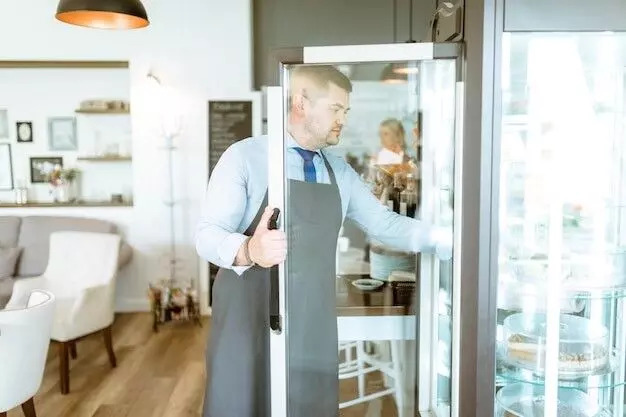Tips to Effectively Organise Your Commercial Kitchen Freezer Room
image for illustrative purpose

Being organised is the key to any successful business. In the restaurant business, an organised kitchen not only boosts kitchen efficiency but also promotes health safety.
By storing your food properly in the kitchen freezer room, you can ensure quality food is delivered to the clients and no food waste.
Depending on the size and the configuration, you will need to organise or add shelves and set the temperature before you close the insulated panels.
Let’s discover how the business needs to organise its freezer room to maximise its efficiency.
Reasons for Keeping the Commercial Freezer Organised
The following are the reasons why you will need to organise your commercial kitchen freezer room:
● The monthly cleaning session will be easier when you start keeping the shelves of your freezers organised.
● If you order something to restock, having a set position will make things simpler.
● The frequency of the cleaning session will be reduced.
● The storage strategy will ensure that everything you buy stays in good condition.
● You can also avoid potential health code violations by following the organisation’s guidelines.
● A well-organised commercial kitchen ensures smooth operation. Your employees will be able to go back on the line faster if they do not waste their time finding specific items in the freezer.
Now that you know the importance of keeping your freezer organised, here are some useful tips that you should use.
Tips for Organising a Commercial Freezer
To optimise your commercial kitchen freezer room for efficiency and safety, follow these essential tips:
1. Categorise Every Food Items
First, it is necessary to classify the food items according to their type and the temperature at which they should be stored.
You can store similar products like meat, eggs, and seafood in place. In another place, organise fresh fruits and vegetables that are ready to cook.
Clearly mark every shelf of the refrigerator for better organisation. By doing this, you or your employees won’t need to search for products for a long time.
2. Keep Space Between Items
Your freezer needs to circulate the cold air. Most people think that cramping everything into the fridge makes the most of the space.
But your fridge needs about 3 to 6 inches of space between the insulated panels walls. Air circulation reduces hot areas and uneven cooling and freezing.
3. Label The Shelves and Items
Labelling everything will allow your employee to find things quickly.
This will be useful if you have any new staff who are still learning their way around the kitchen. So, if you label the shelves, it will be easier for them to see if something is not in the position or out of stock.
Make sure to give training to staff that anything that goes into the fridge needs to be labelled. This labelling includes:
● The date you purchased the item
● The date by which the item should be used
4. The FIFO Rule
FIFO stands for “First In First Out”. It means that old products should be used first. You should store the food that is old and is nearing the expiry date on so that it can be found right as you open the insulated panels.
You can label the products by their expiry date in visible letters to locate the products without any difficulty.
You should regularly schedule an inventory check. This is to ensure that foods are moving in a FIFO manner.
5. Store Your Meat Products on the Lower Shelves
When you store your meat products in a packet, the packet can tear or break. So, the juice from that packet can spill and contaminate other products.
That is why you should always keep your meat products on the lower shelves of the freezer. You may have a large-size refrigerator so you can use an open-wire shelving to store meat at different levels.
6. Should Not Keep Food on the Floor
Make sure that you do not keep any food directly on the floor of the kitchen freezer room. The food will be open to any contamination, dirt, and pest infection.
You need to store food at least 3 to 6 inches above the floor. Most refrigerators have in-built shelves or you can buy them from the dealer or supplier.
7. Keep Fresh Produce Away from Fans
Some foods, including greens and berries, can spoil quickly if you keep them near the internal fans of the freezer.
These fans are necessary for the circulation of air, but they can damage some food items. These items should be kept in sealed containers at a distance from the fans.
Wrapping Up
The structure of your commercial kitchen freezer room plays a vital role in ensuring food quality and extending the life of your commercial refrigerator.
Additionally, it helps you comply with health and food safety regulations. Organising should be performed daily or weekly. This will depend on your refrigerator's capacity and the volume of items you keep inside it.

